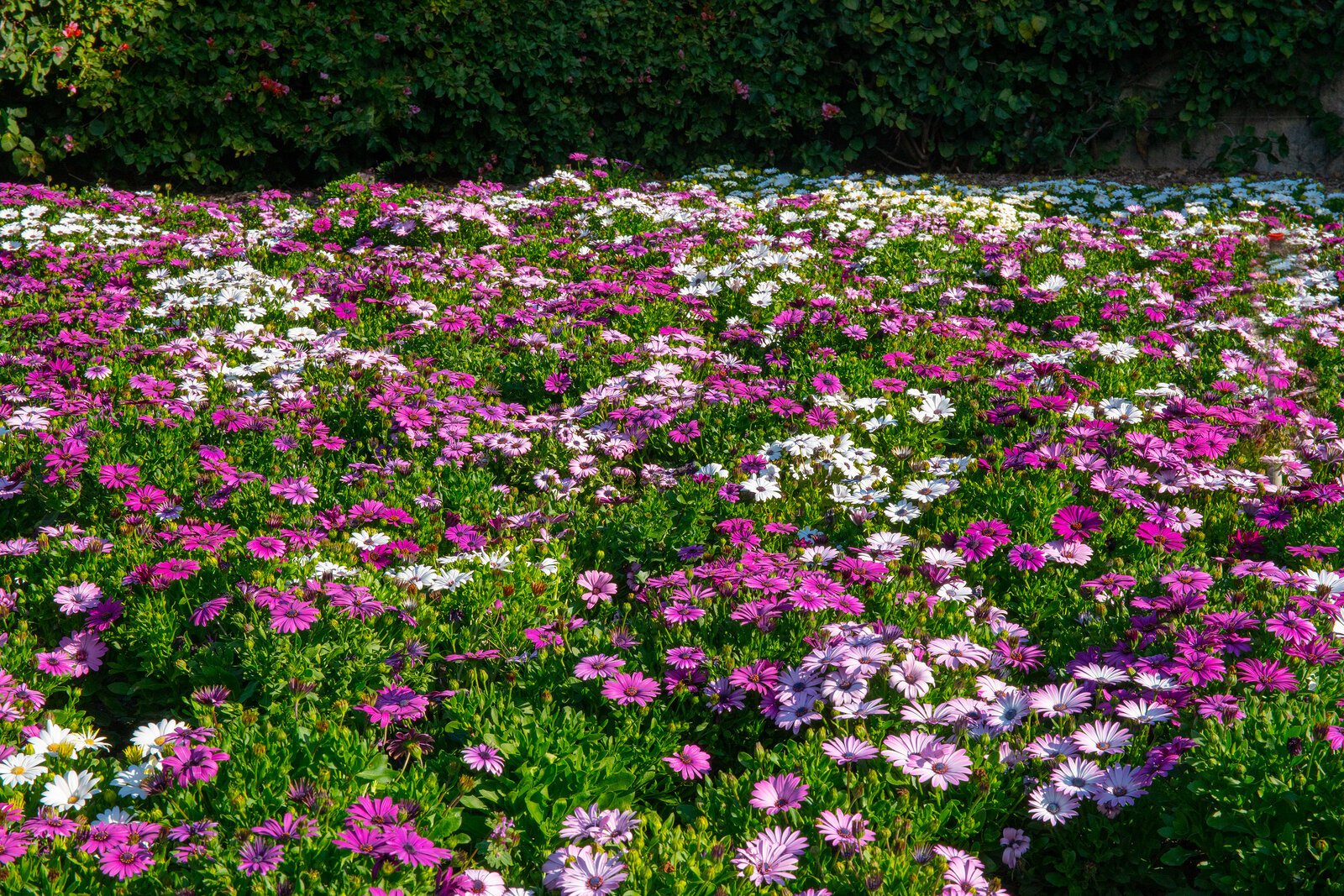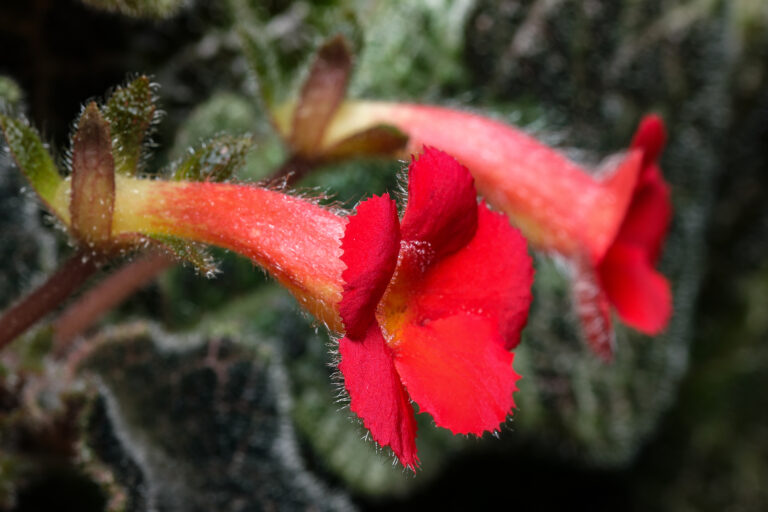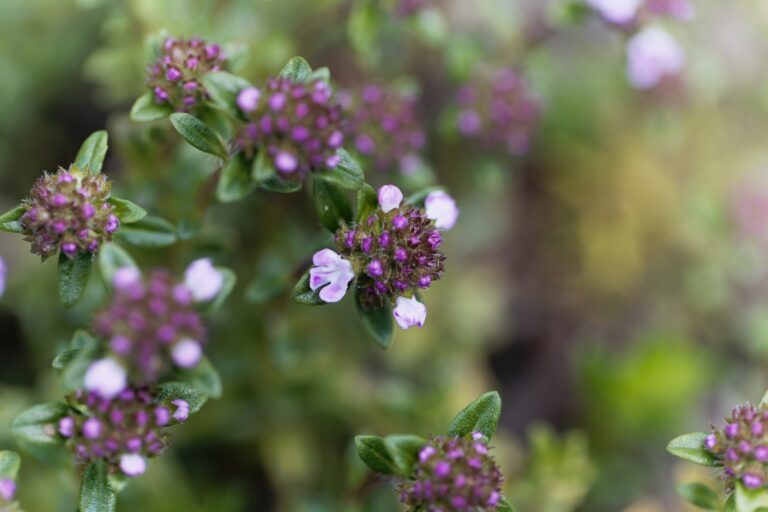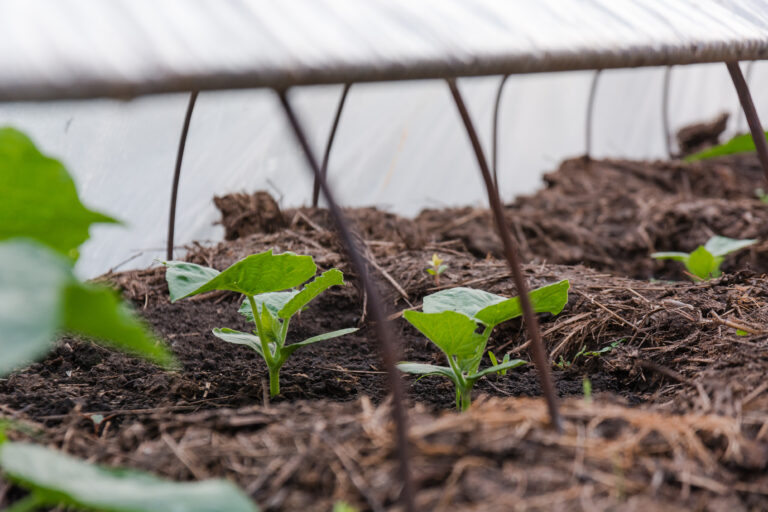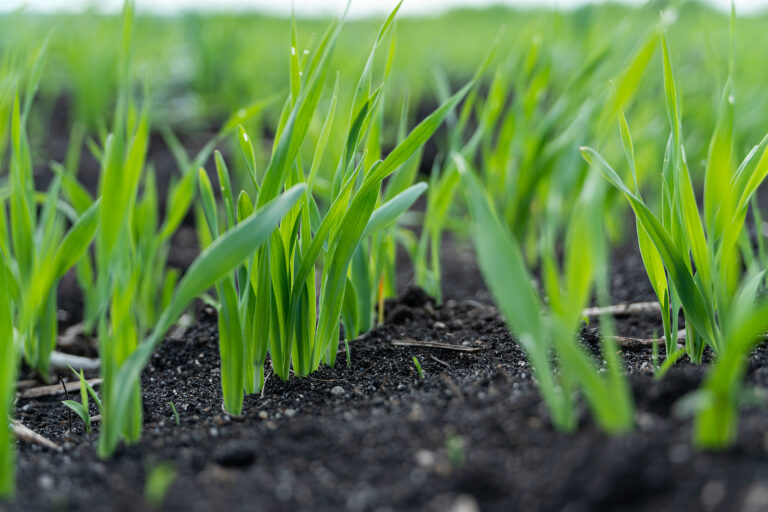Groundcovers in Garden Design
Groundcovers are low growing trailing or clumping plants, usually evergreen, that quickly join together to form a dense layer of leaves. Flowering groundcovers can be grouped together to form a sea of color.
In design groundcover plants are often used to fill the foreground of a design. Planted as a mass groundcover plants cause a space to appear larger. Mixed groundcovers can create a tapestry-like plane of different textures
Groundcovers are also practical. They can be used on slopes to stem erosion. They can be used anywhere to block light from the soil and thus prevent weeds from germinating.
Here are ways you can use groundcovers in your garden:
Groundcovers for beds and borders
- Use groundcover plants along the edge of flower beds and borders; they can serve as a plant transition from a walkway or drive to larger perennials or shrubs.
- Choose flowering groundcovers to add foreground color to a flower bed design.
- Choose non-flowering evergreen groundcovers as a background for flowering annuals, perennials and shrubs.
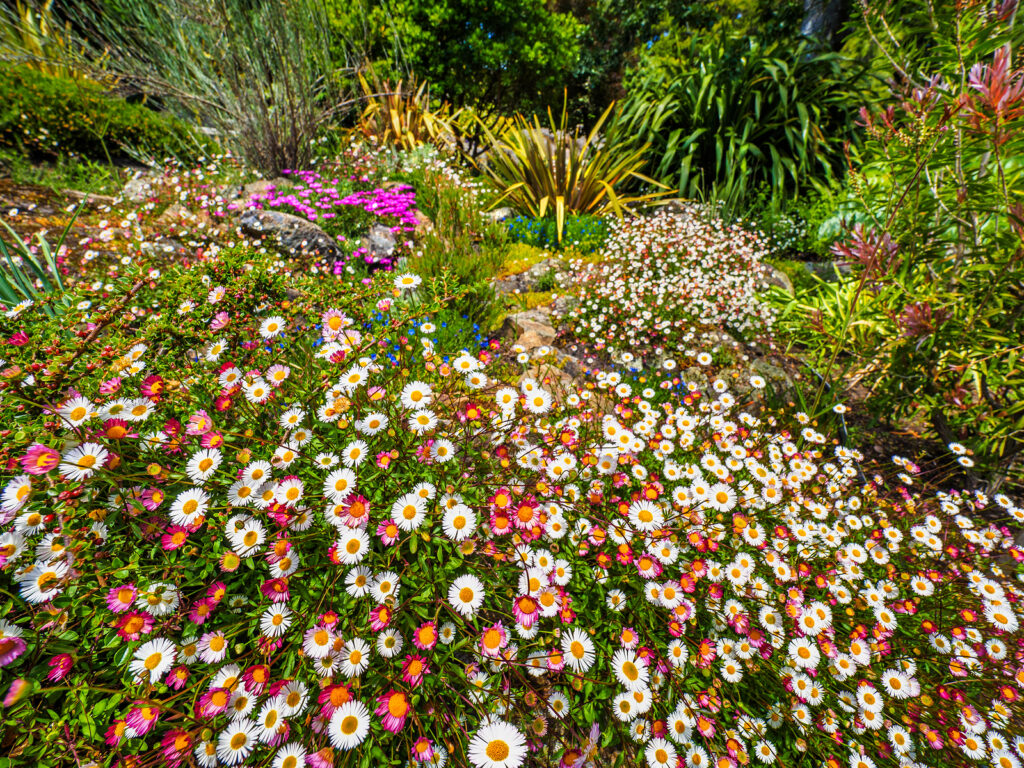
Groundcovers for hot, sunny areas
- Many low growing groundcovers tolerate full sun and are drought tolerant. These groundcovers are native to hot regions—deserts, rocky places, and beaches; they cover the ground like a mat and conserve soil moisture.
List of groundcovers for hot, sunny areas:
| Common Name | Botanical Name | Zones |
| Artemisia | Artemisia stelleriana | 3-9 |
| Basket-of-gold | Aurinia saxatilis | 4-8 |
| Bath’s pink | Dianthus gratianopolitanus ‘Bath’s Pink’ | 4-9 |
| Bearberry cotoneaster | Cotoneaster dammeri | 5-9 |
| Blue star | Amsonia tabermaemontana | 3-9 |
| Bog rosemary | Andromeda polifolia | 2-6 |
| Catmint | Nepeta x faassenii | 4-8 |
| Dwarf blue fescue | Festuca glauca | 4-9 |
| Evergreen candytuft | Iberis semperevirens | 4-8 |
| Germander | Teucrium prostratum | 4-9 |
| Ice plant, hardy | Delosperma nubigenum | 6-9 |
| Hens and chicks | Semervivum tectorum | 4-10 |
| Junipers, low types | Juniperus spp. | Varies |
| Lily turf | Liriope muscari | 7-10 |
| Mountain sandwort | Arenaria montana | 3-6 |
| Phlox, moss | Phlox subulata | 2-9 |
| Prostrate Rosemary | Rosmarinus officinalis ‘Irene’ | 7-10 |
| Rock rose | Helianthemum nummularium | 5-8 |
| Santa Barbara daisy | Erigeron karvinskianus | 7-10 |
| Sea thrift | Armeria maritima | 3-8 |
| Sedum, dragon’s blood | Sedum spurium ‘Dragon’s Blood’ | 3-8 |
| Spring cinquefoil | Potentilla neumannii | 4-8 |
| Stonecrop | Sedum spectabile | 3-10 |
| Thyme, creeping types | Thymus spp. | 5-9 |
| Veronica, low types | Veronica spp. | Varies |
| Wall rockcress | Arabis caucasica | 3-7 |
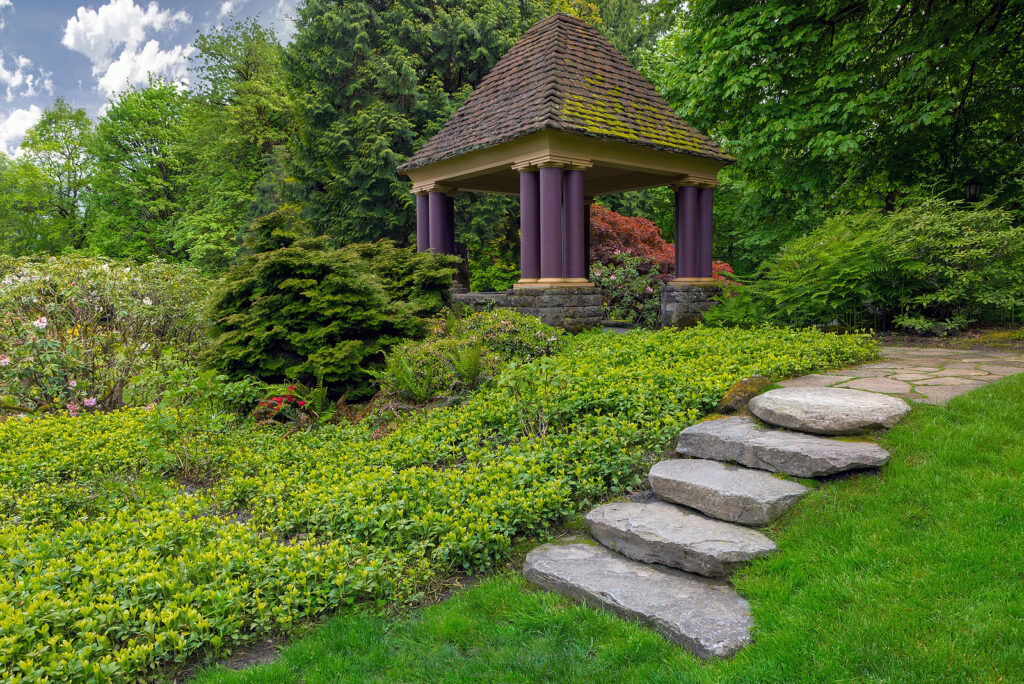
Groundcovers for slopes
- Many groundcovers are creeping plants; they spread via stolons or rhizomes–roots that run along or just under the soil. These plants are well-suited for slopes because the creeping roots reproduce new plants as they spread; the roots or each plant grab and hold the soil.
- Many creeping groundcovers also flower. Flowering groundcovers can add color to a slope that otherwise might be of little interest.
List of groundcovers for slopes:
| Common Name | Botanical Name | Zones |
| Basket-of-gold | Aurinia saxatilis | 4-8 |
| Blanket flower | Gaillardia x grandiflora | 2-9 |
| Candytuft, evergreen | Iberis sempervirens | 4-8 |
| Coralberry, prostrate Chenault | Symphoicarpos x chenaultii | 4-7 |
| Cotoneaster, bearberry | Cotoneaster dammeri | 5-9 |
| Freeway daisy | Osteopermum fruticosum | 8-10 |
| Hens and chicks | Sempervivum tectorum | 4-10 |
| Ice plant, hardy | Delosperma nubigenum | 6-9 |
| Ivy, English | Hedera helix | 5-9 |
| Jasmine, Asiatic | Trachelospermum asiaticum | 7-10 |
| Juniper, Andorra compact | Juniperus horizontalis ‘Plumosa Compacta’ | 3-9 |
| Juniper, Bar Harbor | Juniperus horizontalis ‘Bar Harbor’ | 3-9 |
| Juniper, Blue Chip | Juniperus horizontalis ‘Blue Chip’ | 3-9 |
| Juniper, Blue Pacific shore | Juniperus conferta ‘Blue Pacifica’ | 5-9 |
| Juniper, Blue Rug | Juniperus horizontalis ‘Wiltonii’ | 3-9 |
| Lilyturf | Liriope muscari | 7-10 |
| Mondo grass | Ophiopogon japonicus | 7-9 |
| Phlox, moss | Phlox subulata | 2-9 |
| Pink, Bath’s | Dianthus gratianopolitanus | 4-9 |
| Rose, Alba Meidiland | Roas ‘Alba Meidiland’ | 4-8 |
| Sedum, goldmoss | Sedum acre | 4-9 |
| Spurge, cypress | Euphorbia cyparissias | 4-8 |
| Strawberry, alpine | Fragaria vesco | 3-9 |
| Verbena, moss | Verbena pulchella | 8-10 |
| Vinca, little leaf | Vinca minor | 4-8 |

Groundcovers for shade
- Many groundcovers are also shade lovers; they grow best where there is little sun.
- Groundcovers for shade are commonly native to forested regions; they are well-adapted to little light and some can tolerate constantly moist soil.
- Groundcovers for shade that flower can add sparks of light and color to otherwise shadowy planting areas.
List of groundcovers for shade:
| Common Name | Botanical Name | Zones |
| Archangel, yellow | Lamiostrum galeobdolon | 3-9 |
| Blue-eyed Mary | Omphalodes verna | 5-9 |
| Bog rosemary | Andromeda polifolia | 2-6 |
| Bunchberry | Cornus canadensis | 2-7 |
| Christmas rose; Lenten rose | Helleborus niger | 4-9 |
| Coralberry, prostrate Chenault | Symphoricarpos x chenaultii | 4-7 |
| Cotoneaster, bearberry | Cotoneaster dammeri | 5-9 |
| Ferns | Various | Varies |
| Foam flower, Allegheny | Tiarella cordifolia | 4-9 |
| Forget-me-not | Myosotis scorpiodes | 3-8 |
| Goldenstar | Chusogonum virginianum | 5-8 |
| Hosta | Hosta spp. | 3-8 |
| Italian arum | Arum italicum | 6-10 |
| Ivy, English | Hedera helix | 5-9 |
| Lily-of-the-valley | Convallaria majalis | 2-9 |
| Pachysandra | Pachysandra terminalis | 4-10 |
| Phlox, creeping | Phlox stolonifera | 2-8 |
| Snow-on-the-mountain | Aegopodium podagraria | 3-9 |
| Strawberry, Alpine | Fragaria vesca | 3-9 |
| Sweet woodruff | Galium odoratum | 4-8 |
| Vinca | Vinca minor, Vinca major | 4-8 |
| Wintergreen | Gaultheria procumbens | 3-8 |

Shrubs as groundcovers
- Low-growing shrubs, especially ones that have spreading habits, can be used as groundcovers. A shrub is a commonly low-growing plant that has a woody stem or multiple stems.
- Shrubby groundcovers are long-staying in the garden, more so than low ground perennial groundcovers.
List of shrubs to use as groundcovers
| Common Name | Botanical Name | Zones |
| Bearberry | Arctostaphylos uva-ursi | 2-7 |
| Blackberry, prostrate | Rubus pentalobus | 7-9 |
| Blueberry, lowbush | Vaccinium angustifolium | 4-9 |
| Bunchberry | Cornus canadensis | 2-7 |
| Candytuft | Iberis sempervirens | 4-8 |
| Cotoneaster, bearberry | Cotoneaster, dammeri | 6-9 |
| Cotoneaster, cranberry | Cotoneaster apiculata | 5-8 |
| Euonymus, wintercreeper | Euonymous fortunei | 4-8 |
| Heath | Erica carnea | 5-7 |
| Heather | Calluna vulgaris | 3-8 |
| Honeysuckle | Lonicera pileata | 5-9 |
| Japanese spurge | Pachysandra terminalis | 4-8 |
| Junipers, low spreading | Juniperus spp. | 3-9 |
| Lantana | Lantana spp. | 8-10 |
| Mahonia, creeping | Mahonia repens | 5-8 |
| Purple-leaf winter creeper | Eunoymous fortunei ‘Coloratus’ | 5-9 |
| Roses, low spreading | Rosa spp. | Varies |
| St. Johnswort | Hypericum calycinum | 5-9 |

